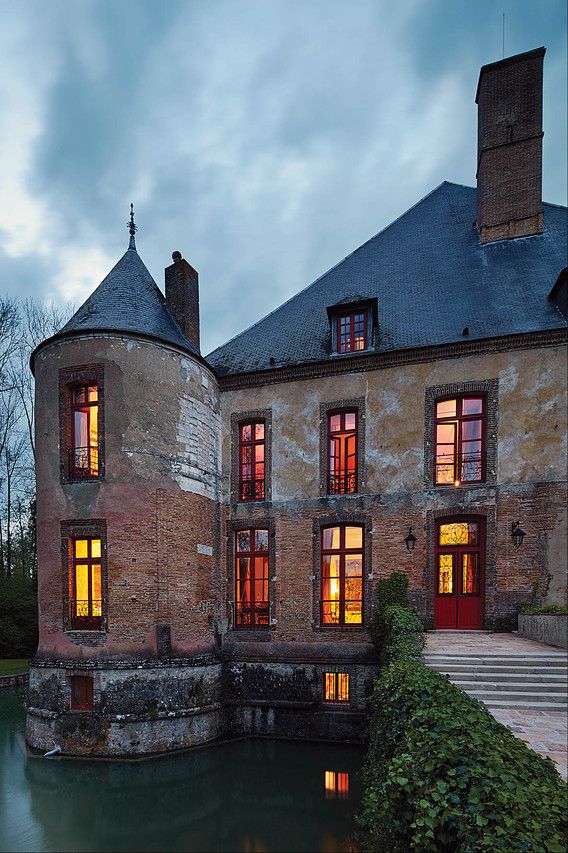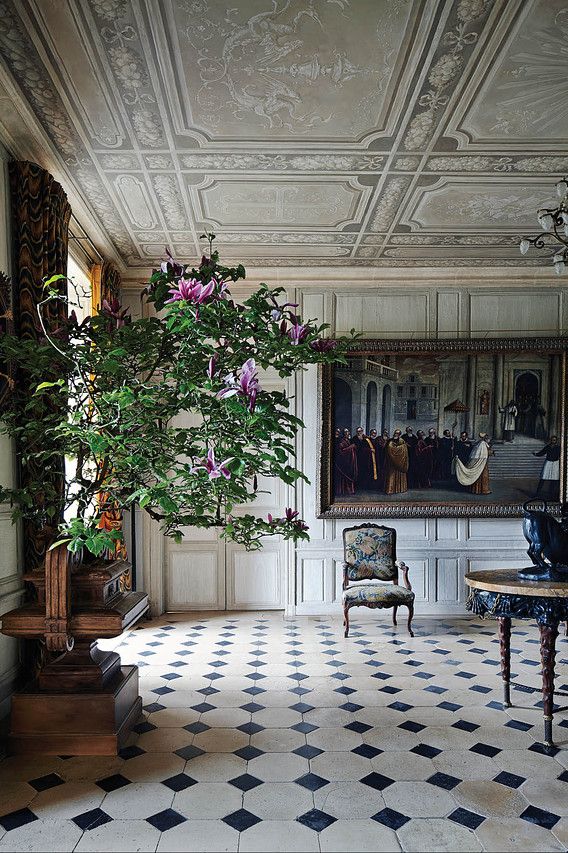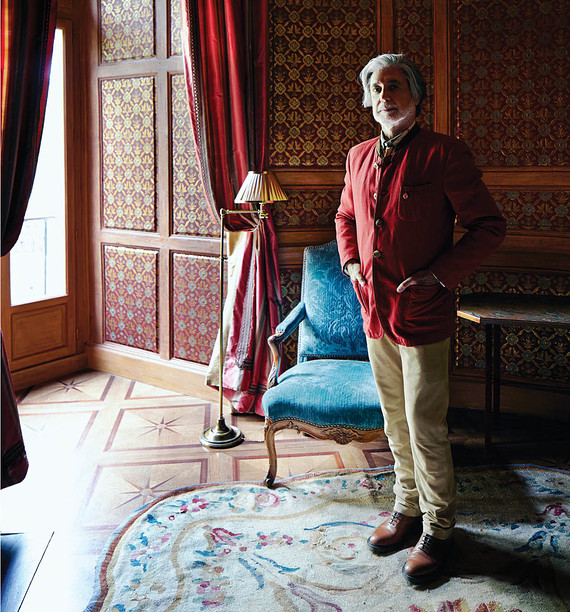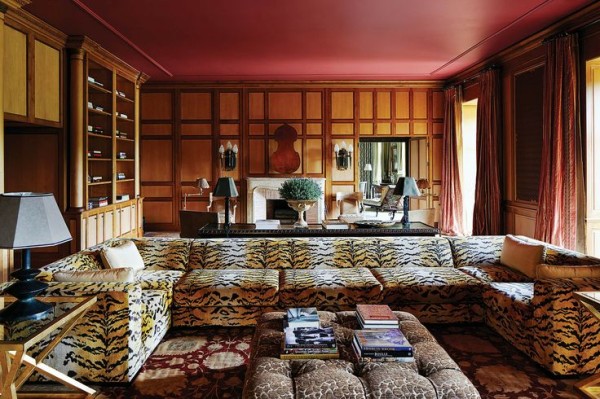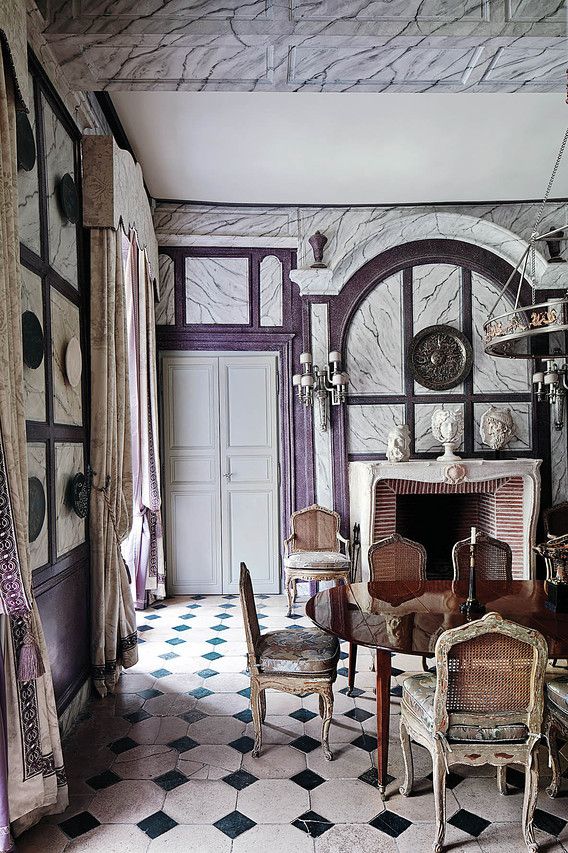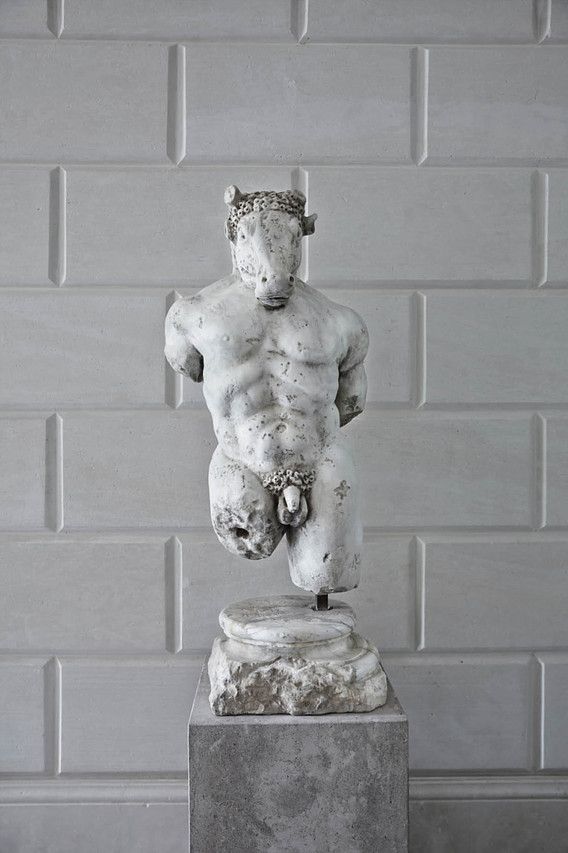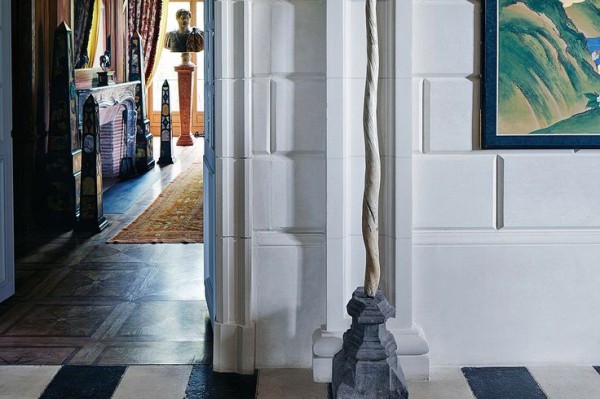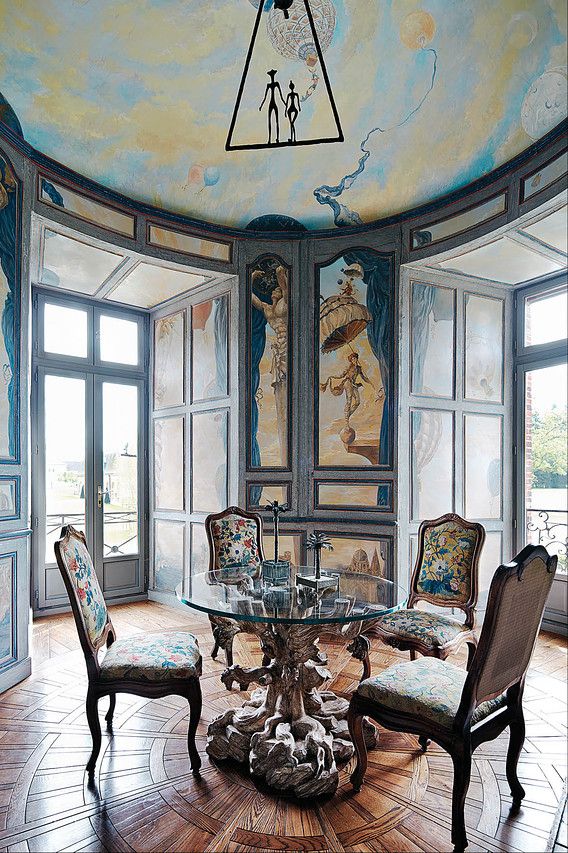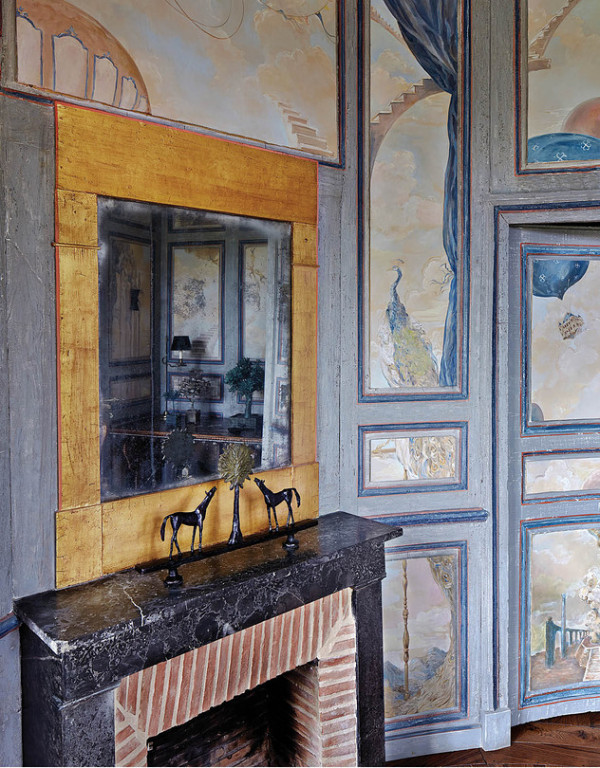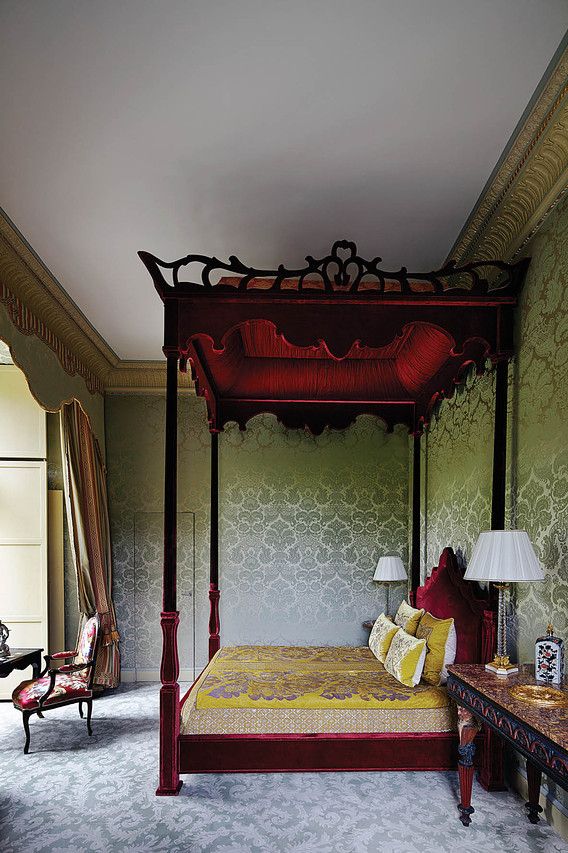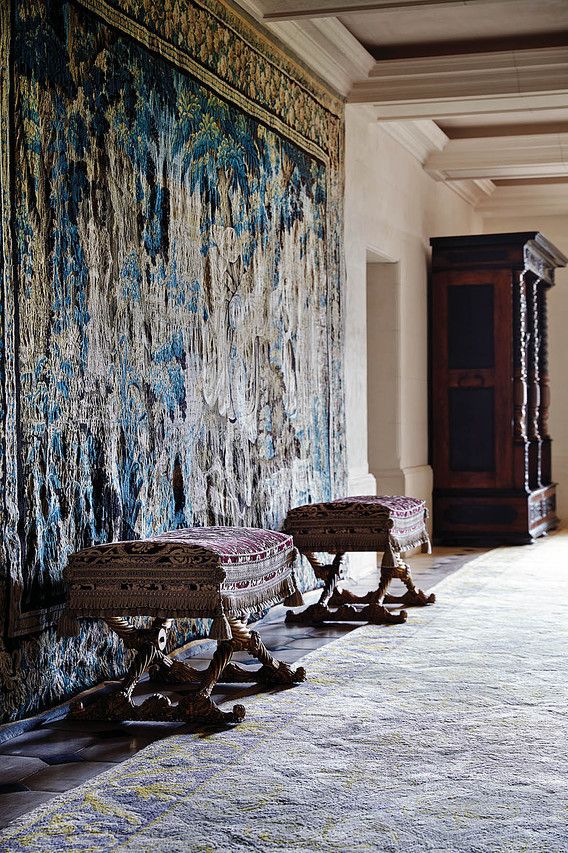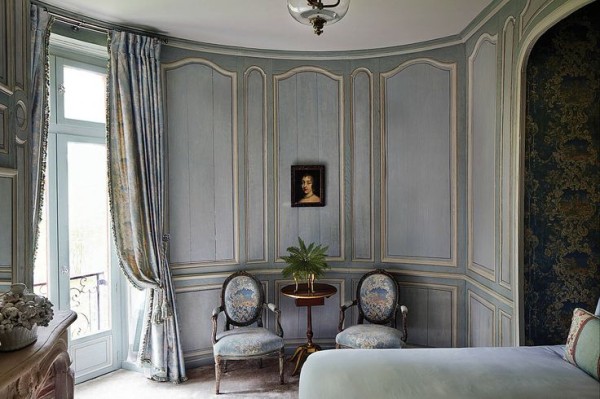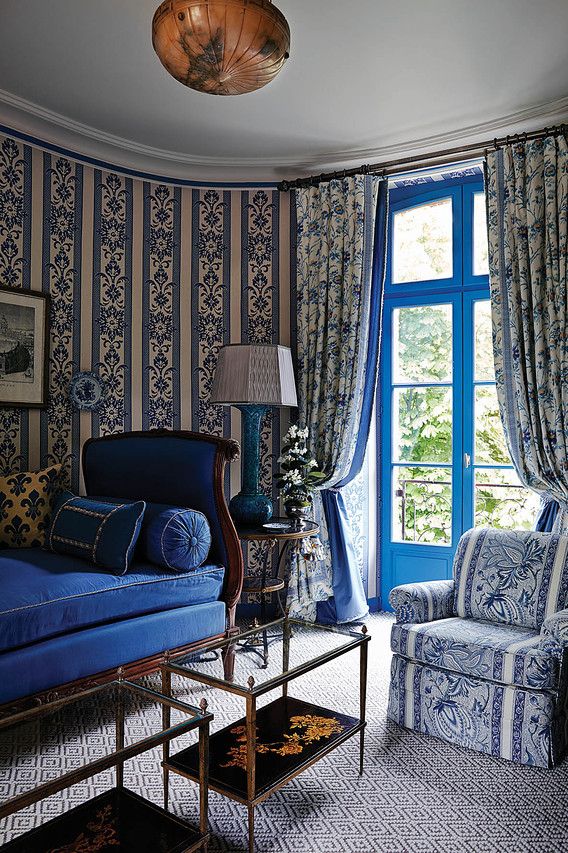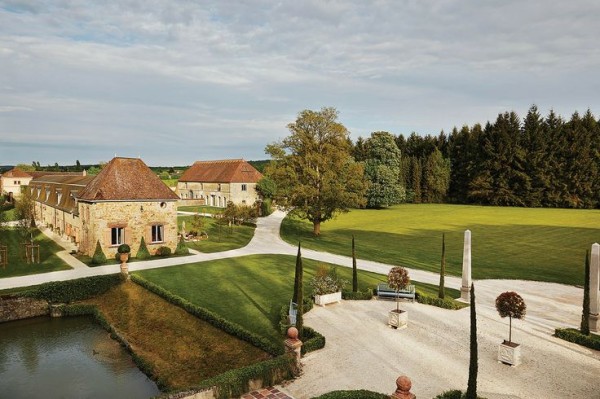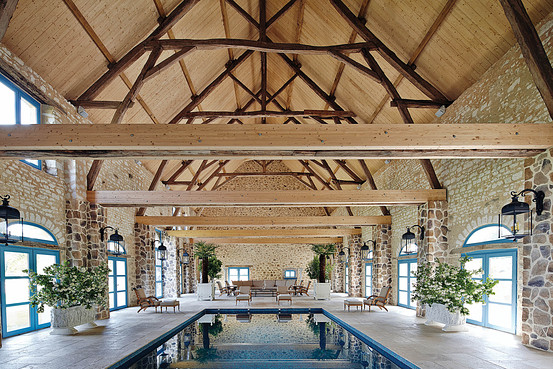Maximalist interior decorator Juan Pablo Molyneux recently transformed a château in Pouy-sur-Vannes, about two hours outside Paris, for himself as an intimate respite from his harried schedule in Paris, where he lives in a 17th-century hôtel particulier. The 40,000 square foot château may not be most anyone’s idea of intimate, but Molyneux succeeded in orchestrating a harmonious and comfortable environment that blends the patina of age one expects of a structure that dates back to the 12th-century with grand strokes of elegance, and a touch of glamour. In an article written by Joshua Levine for WJS he writes “Molyneux sees Pouy as a kind of summing up of everything he stands for: formalism without stiffness, ornamental richness without fussiness and a sense of harmony and comfort that allows you to think, if only for a moment, that you could plop yourself down in the main sitting room with its marbleized-velvet walls and call this place home.”
For the restoration of the dilapidated fortress Molyneux gathered a coterie of métiers — stone masons, carpenters, gilders, masters of wrought iron and masters of scagliola, a 17th-century Tuscan technique that uses paint and plaster to mimic marble and other kinds of stone – to return the dreary château to its former glory.
In the main vestibule, a 17th-century Venetian painting from the Tintoretto school hangs behind an ‘Hercules’ table purchased from Galerie Steinitz in Paris.
Molyneux stands in the library, which has walls covered in deep-red leather embossed with sky blue and gold medallions. The Régence armchair is from 1735.
In the decidedly more contemporary style of the living room a sectional sofa is upholstered in lively silk tiger velvet from Bevilacqua in Venice. In the foreground is a black Giacometti table lamp.
The scheme for the dining room is a delicious marriage of gray and lilac. The scagliola treatment of the walls was intended to appear decorative, not as a literal impression of marble. The chairs are Louis XV by Georges Jacob.
A Roman Minotaur statue dating from the first or second century A.D.
A narwhal tusk stands sentry at the entrance to the library, from the first-floor gallery.
The walls and ceilings in the tower tea room were hand-painted by Frédéric Monpoint with fantastical scenes illustrating balloons.
A closer view of the hand-painted panels that adorn the walls of the tea room. On the mantel stands Chevaux (1970), by Diego Giacometti.
A ‘Gaine’ bed in silk velvet was designed by Molyneux for a bedroom.
An 18th-century French daybed upholstered in a vivid ultramarine velvet anchors the tower guest bedroom.
For the full story visit WSJ Magazine. Photography by Simon Watson.











